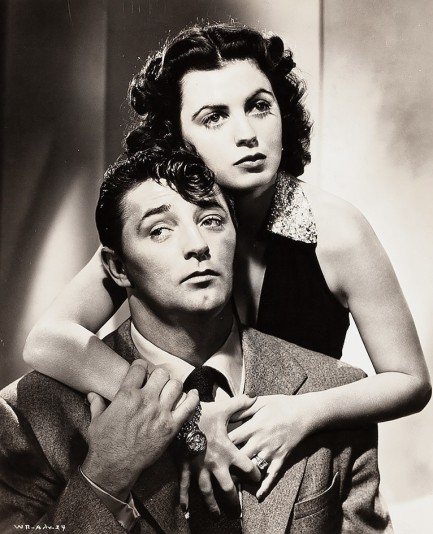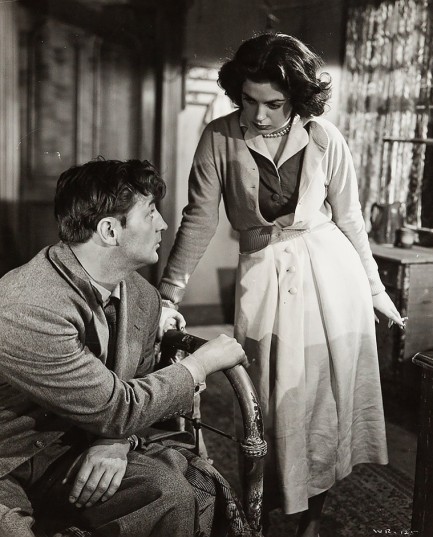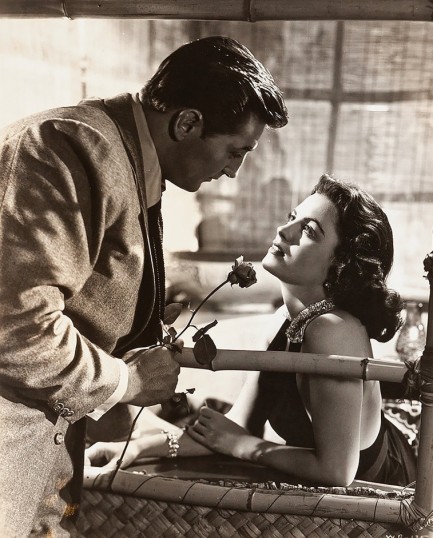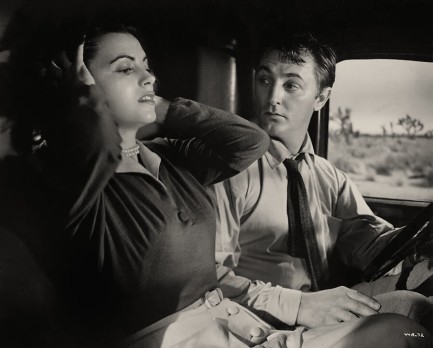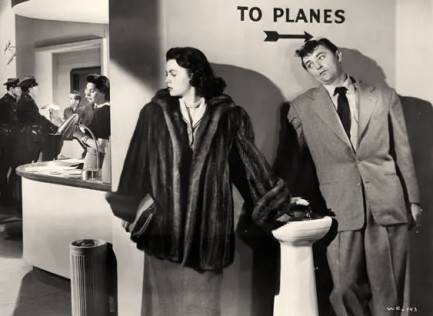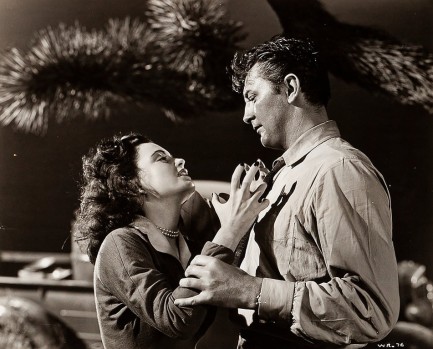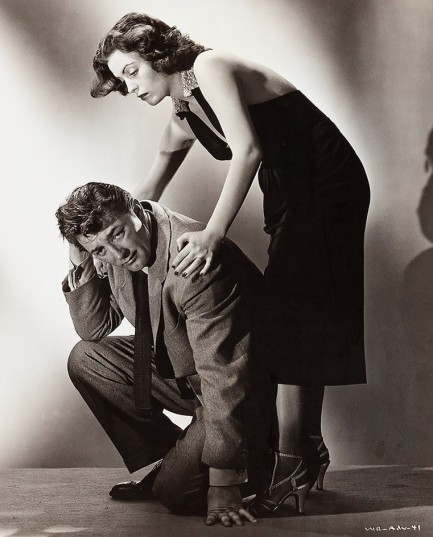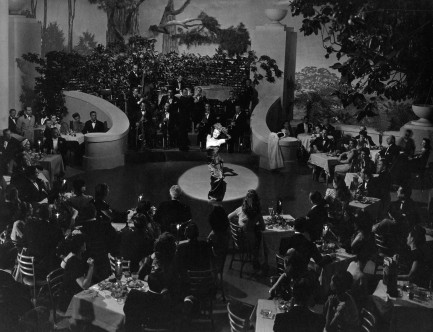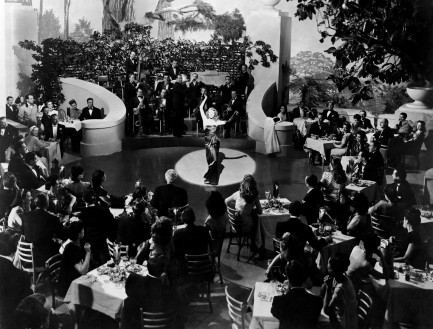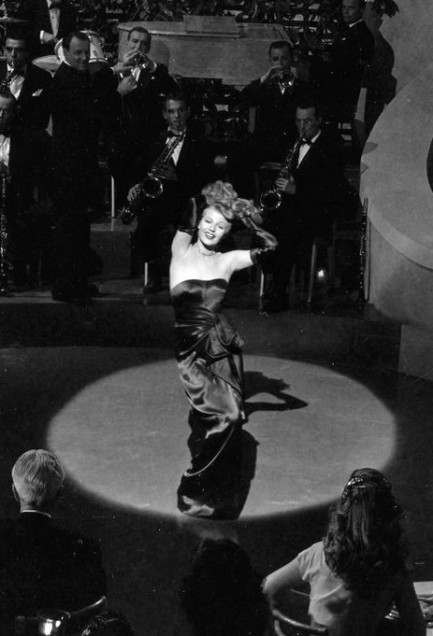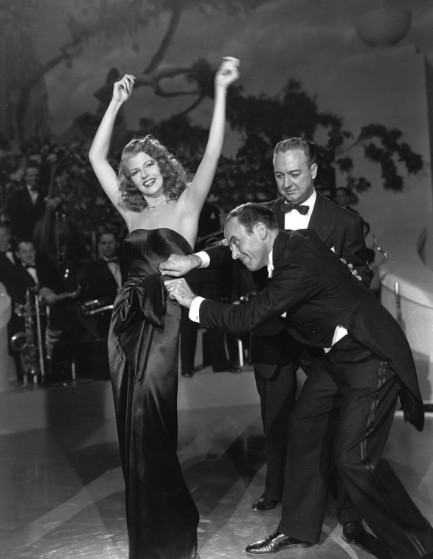 It's an extravagant look because if she ever needs to shoot someone she wants them to notice the gun last. 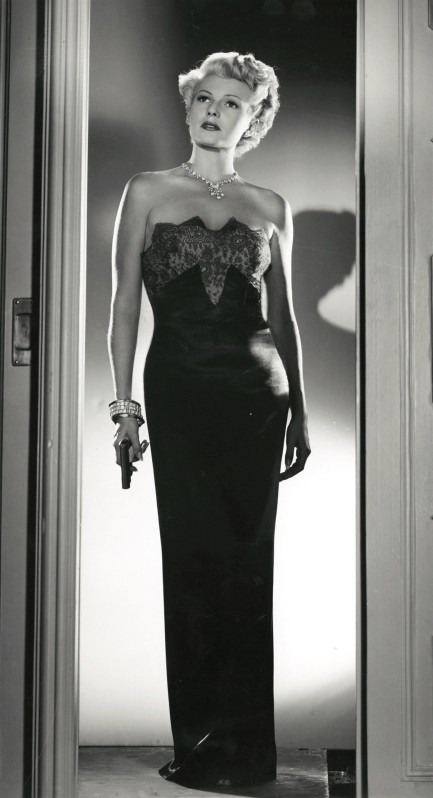
Above is a publicity image featuring the legendary Rita Hayworth made when she was filming 1947's The Lady from Shanghai. We shared a promo from the movie several years back. This is another frame from the same session, showing Hayworth in the same slippery sheath. She plays a slippery character too.
 I'm conflicted. You strangled my husband, but you're the first man who does what I want without me nagging him. 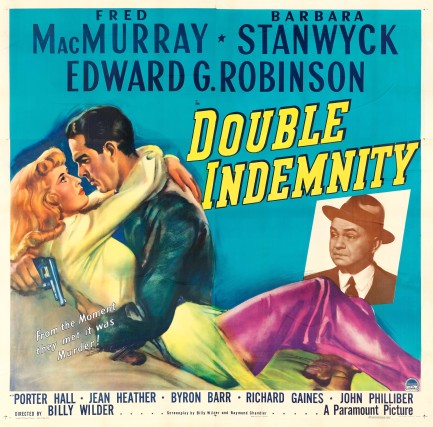 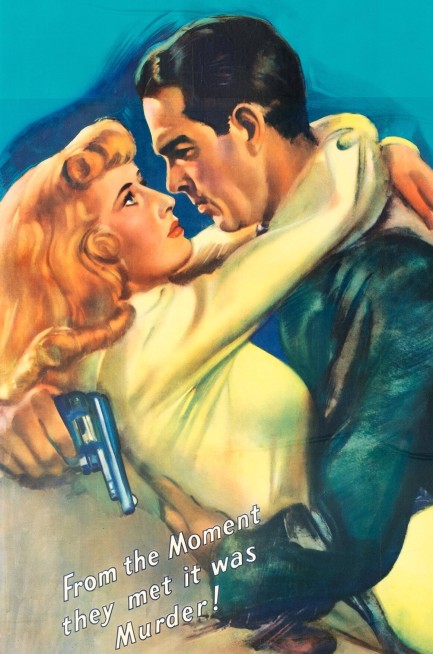 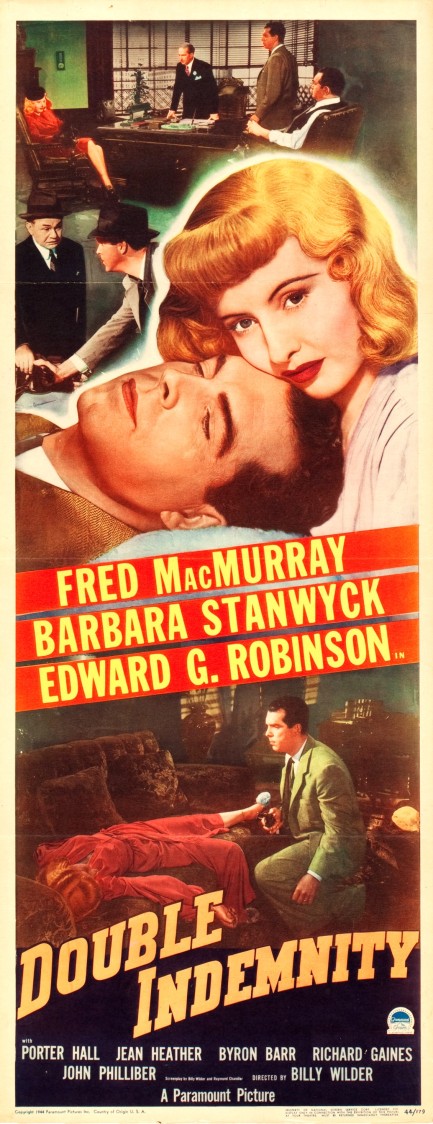
Above: a U.S. six sheet poster and zoom followed by an insert poster for the all-time film noir classic Double Indemnity. If you don't like this one, you don't like movies. It premiered in the U.S.—at a special event in Norman, Oklahoma of all places—today in 1944. We shared its West German poster here, joked about one of its classic sequences here, wrote about its modernized remake Body Heat here, and shared its Australian poster and covered the film in detail here.
 I find it fascinating that today's paper says nothing about you, but by tomorrow you're all it will talk about. 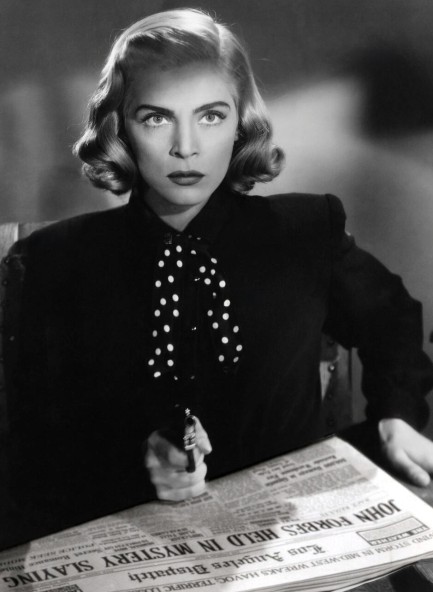
Above: Lizabeth Scott looking like she means serious business in a promo photo made for her 1948 film noir Pitfall. Scott was an a-list actress and a noir stalwart, so her movies are usually safe bets. Pitfall isn't her best, but it's certainly worth watching.
 Give credit where credit is due—when possible. 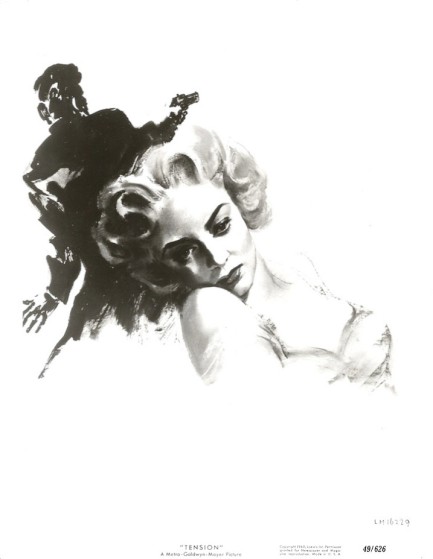
Above is an MGM promo handout for the film noir Tension, which starred Audrey Totter and hit cinemas today in 1949. It was painted in ink by the same person who did the poster, one of the greatest artists in cinema poster history—the inimitable uncredited. It's a great piece by a true master. We've shown you a lot of Tension's U.S. promo art, and today's doesn't even empty the well of what's out there, but it's the last time we'll dip into it. So many vintage films, so little time...
 Not just another brick in the wall. 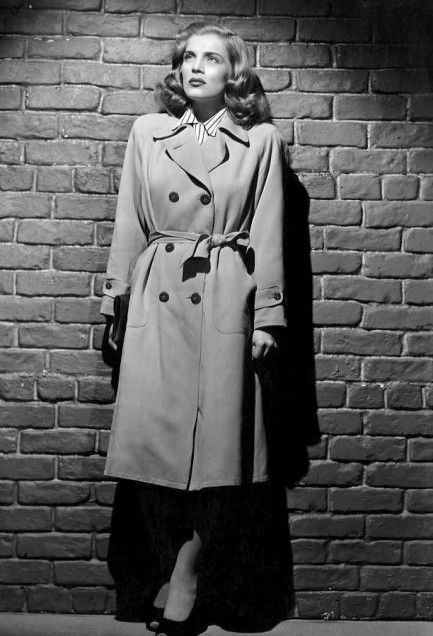
Lizabeth Scott, who you see above, has an outsize legacy in film history thanks to her appearances in several film noir landmarks: Dead Reckoning, I Walk Alone, Pitfall, and Too Late for Tears come to mind. She also appeared in Dark City, Paid in Full, The Racket, the bizarre British noir-adjacent melodrama Stolen Face, and others. The above promo image was made when she appeared in one of her best movies—the Barbara Stanwyck headlined film noir The Strange Love of Martha Ivers, from 1946.
 There's a new prosecutor in town—and his name is Humphrey. 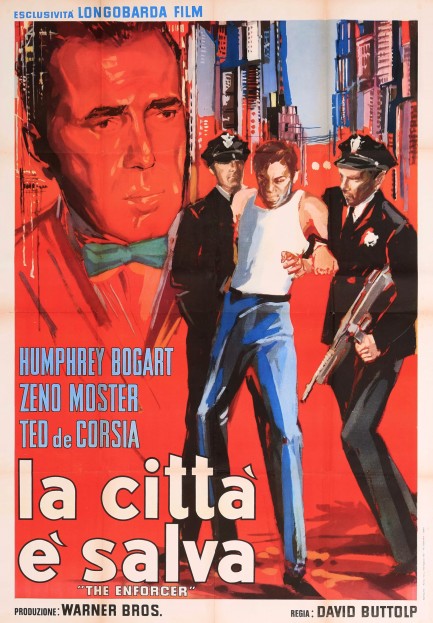
Above: an Italian poster for La città è salva, better known as The Enforcer, starring Humphrey Bogart as a prosecutor tasked with cleaning up rampant corrutpion in the big city. The movie is middle tier for Bogart, but that means it's still very good. The poster is uncredited, but spectacular, with its abstract skyscraperscape and elongated figures. If we ever find out who painted it we'll updated this post. La città è salva premiered in Italy today in 1951.
 With Bogart and Bacall in the starring roles an unusual fugitive movie takes flight. 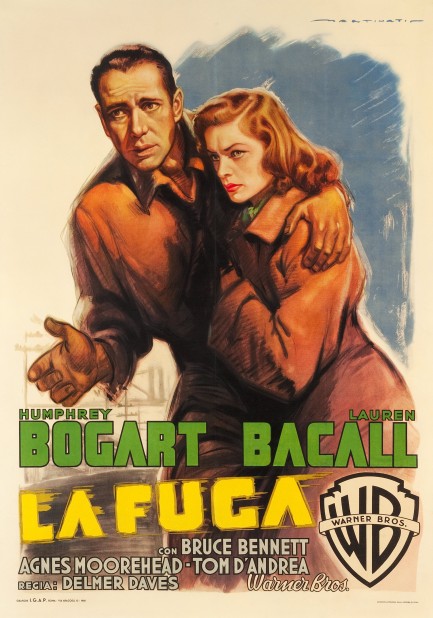
This beautiful poster for La fuga was painted by Italian artist Luigi Martinati, and you doubtless recognize Humphrey Bogart and Lauren Bacall. They starred in four movies together and had a dual cameo in a fifth. This promo was made for their fourth outing Dark Passage, retitled to “the escape” in Italy. And therein lies the plot. Bogart breaks prison and undergoes a backalley cosmetic surgery procedure on his face in order to evade the cops and have a chance to solve the crime for which he was unjustly sent up the river. The filmmakers decided to use the gimmick of having the first section of the film in Bogart-vision—i.e. first person pov until he gets his new face. It makes sense. Otherwise they'd have needed to have another actor play pre-surgery Bogart, or have resorted to clunky make-up and prosthetics. Bacall co-stars as unlikely shelter and succor, plus the prospect of love—if Bogie can survive. It's a good movie.
But we're going to tack upwind at this point and suggest that Dark Passage, while good, isn't as scintillating as its reputation. Certainly it isn't in the class of To Have and Have Not, Key Largo, or The Big Sleep. But hey—it stars B&B, and that's all audiences of the era really cared about. Three years into her film career Bacall had grown into superstardom—or stardom as it was called back then—and dished out a performance here that did plenty with a thin script and a belief defying scenario. The other star here is San Francisco, where most of the movie was shot. The city appeared in many period productions, but we can't think of it ever being used to such an extent as in Dark Passage. Since we lived across the Bay in Berkeley for a couple of years, we got to know San Fran well and it's fun to see it as it once was. Dark Passage—slightly overrated and all—is fun too. It premiered in the U.S. in 1947 and reached Italy today in 1948.
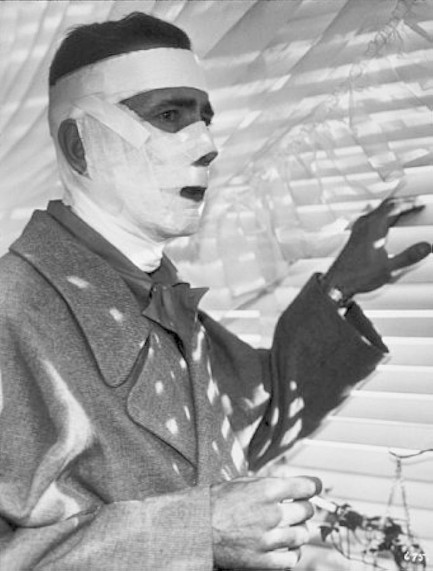 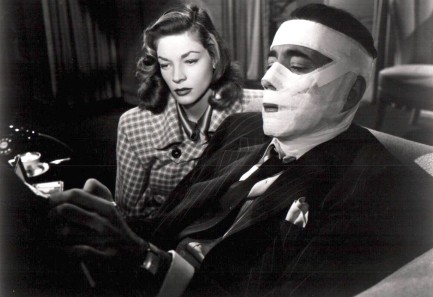 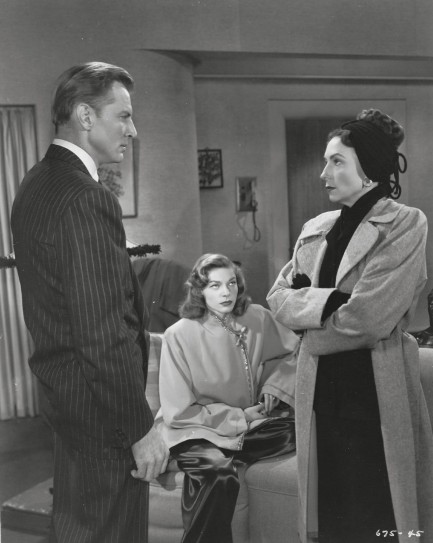 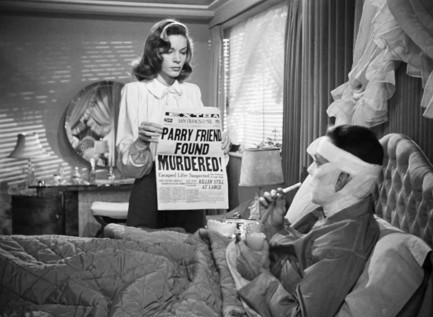 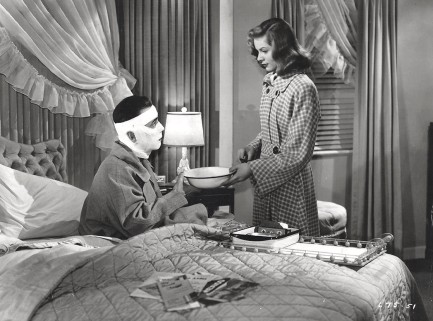 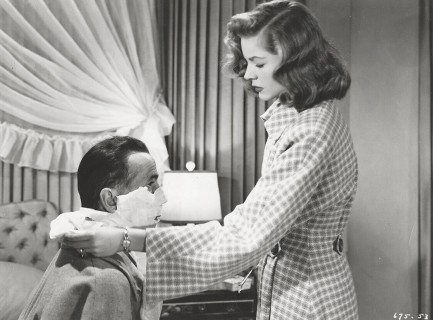 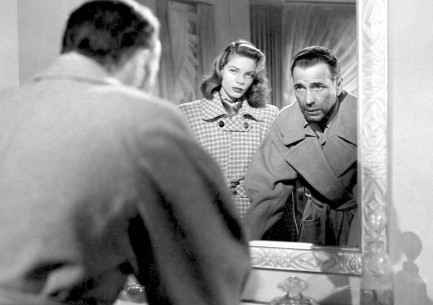  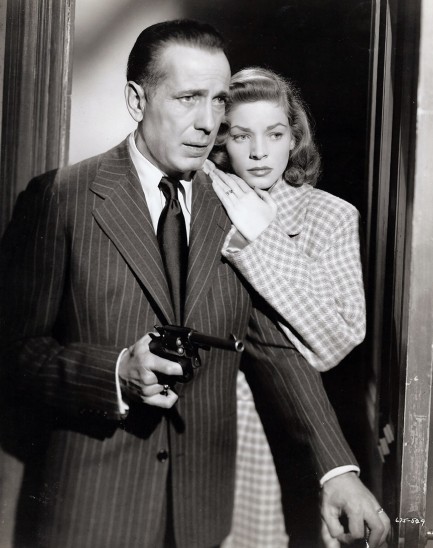 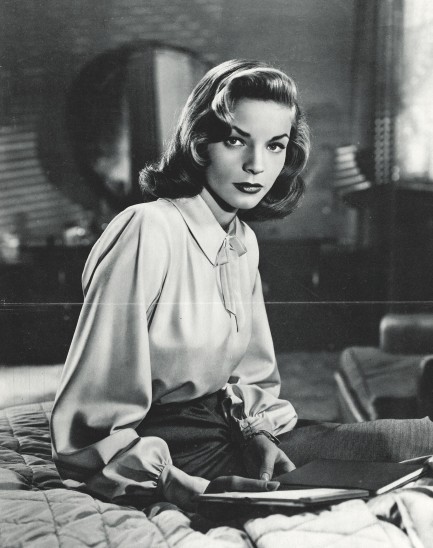 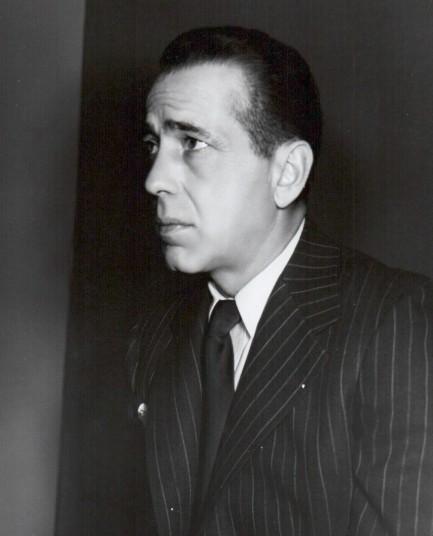 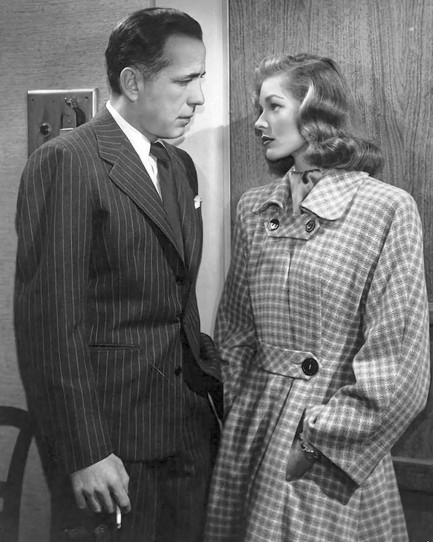 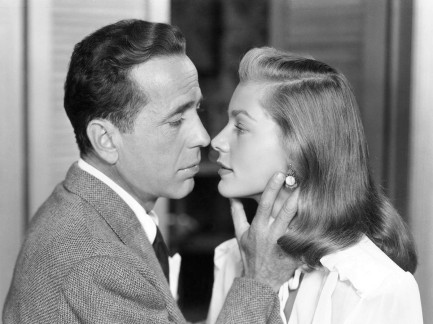
 When the worst that can happen actually happens. 
Nine years ago when we discussed Nightmare Alley we shared its West German poster, so we thought we'd circle back to the movie today, first because it was excellent, second because we wanted to share the U.S. poster, and third because Mexican auteur Guillermo del Toro remade it a couple of years ago, which made us think we needed to remind people there was a previous version. Well, here's the reminder: the original Nightmare Alley is one of the darkest films of the mid-century period. Tyrone Power is great in it, and Coleen Gray never hurts to have around, but what really makes the film worthwhile is that it's loaded with interesting subtext. If you want to know more about it, our previous write-up is here. Nightmare Alley premiered in the U.S. today in 1947.

|
 |

The headlines that mattered yesteryear.
2003—Hope Dies
Film legend Bob Hope dies of pneumonia two months after celebrating his 100th birthday. 1945—Churchill Given the Sack
In spite of admiring Winston Churchill as a great wartime leader, Britons elect
Clement Attlee the nation's new prime minister in a sweeping victory for the Labour Party over the Conservatives. 1952—Evita Peron Dies
Eva Duarte de Peron, aka Evita, wife of the president of the Argentine Republic, dies from cancer at age 33. Evita had brought the working classes into a position of political power never witnessed before, but was hated by the nation's powerful military class. She is lain to rest in Milan, Italy in a secret grave under a nun's name, but is eventually returned to Argentina for reburial beside her husband in 1974. 1943—Mussolini Calls It Quits
Italian dictator Benito Mussolini steps down as head of the armed forces and the government. It soon becomes clear that Il Duce did not relinquish power voluntarily, but was forced to resign after former Fascist colleagues turned against him. He is later installed by Germany as leader of the Italian Social Republic in the north of the country, but is killed by partisans in 1945.
|

|
|

It's easy. We have an uploader that makes it a snap. Use it to submit your art, text, header, and subhead. Your post can be funny, serious, or anything in between, as long as it's vintage pulp. You'll get a byline and experience the fleeting pride of free authorship. We'll edit your post for typos, but the rest is up to you. Click here to give us your best shot.

|
|

